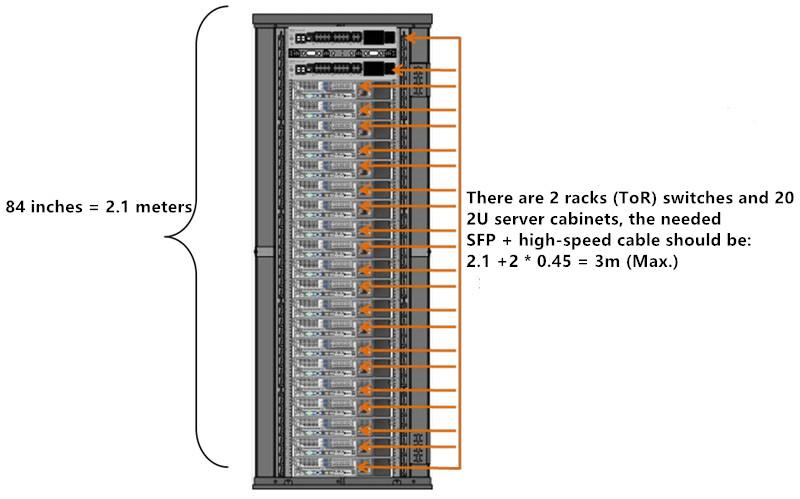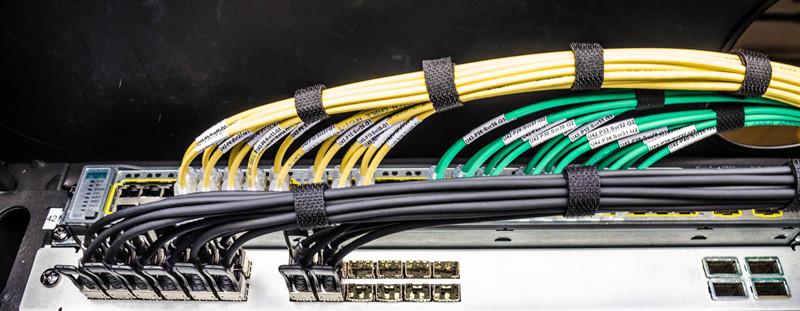- Related articles
- Cisco Optical Module Decryption Method
- Optical Transceivers for Cisco WS-C3650-48FS-S Switch
- Applicable to 1000BASE-EZX Standard Optical Transceiver Models
- 100 Gigabit Ethernet Optical Transceiver Solution
- Optical Transceivers for Cisco WS-C3560-24TS-S Switch
- Selection of Fiber Optic Cable
- Optical Transceivers for Cisco WS-C2960X-24TS-LL Switch
- All Cisco ONS-SE-GE-BXD's information (List price, Specs, Datasheet PDF, Compatibility mat
- Optical Transceivers for Cisco N3K-C3172PQ-XL Switch
- Optical Transceivers for Cisco SRW2048-K9-UK Switch

10G SFP + high-speed cable and optical module is a commonly used optical device in data center rack-mounted (ToR) wiring, using to connect small access switches and servers. Among them, 10G SFP + high-speed cable is an alternative optical module of the low-cost solution, used to achieve short-range high-speed interconnect, with low power consumption and low latency. However, when deploying SFP + high-speed cables in the data center, there are some things to keep in mind and this article detail these notes.
Do not exceed the bending radius of the SFP + high-speed cable
The weight of the large beam of high-speed cables can cause the cable to bend and cause pressure to the connector on the active device. If the bending degree of the high-speed cable is greater, it will cause excessive mechanical stress conduction into the connector in the device, damaging the device circuit board. In addition, the greater degree of cable bending can also cause high-speed cable connector cannot interface with the device to form a good docking. In short, mechanical stress due to excessive bending radius will reduce the performance of high-speed cables and even damage the equipment. Therefore, in the deployment of high-speed cable, we must pay attention not to exceed the SFP + high-speed cable bending radius; In addition, we have to find ways to eliminate the mechanical stress on the cable as much as possible. The bend radiuses of the different American wire gauge (AWG) values are also different. The following table details the bending radius of SFP + high-speed cables with several different AWG values:
|
AWG |
bending radius |
|
24 |
38 mm |
|
26 |
33 mm |
|
28 |
25 mm |
|
30 |
23 mm |
Calculate the length of the SFP + high speed cable
In order to prevent high-speed cable due to heavy load and droop, the use of cable management or stress reduction tool is necessary. Stress reduction tools to ensure that the bending radius of the high-speed cable is maintained within the normal range, and is conducive to the cable path neat and orderly; Cable ties and other cable management tools can be high-speed cable bundles tied to stress relief tools, But also conducive to fixed cable.When you are deploying an SFP + high-speed cable in an 84-inch, 45RU cabinet, the estimated length of cable from the top of the cabinet to the bottom is about 2.1m, and the cable length between the two adjacent ports is about 0.45 M. If there are two rack-mounted (ToR) switches in a cabinet and 20 2U SFP + network cards in the cabinet, the SFP + high-speed cable is required to be 2.1 + 2 × 0.45 ≈ 3 m.

Use the cable management tool to help support SFP + high-speed cable

Conclusion
SFP + high-speed cable supports Ethernet, Fiber Channel, InfiniBand, SAS and SONET / SDH devices, enabling high-density connectivity between network devices. It is a high-performance, low-cost network connectivity solution and a low-cost In-rack connection or inter-rack connection solution.





















































